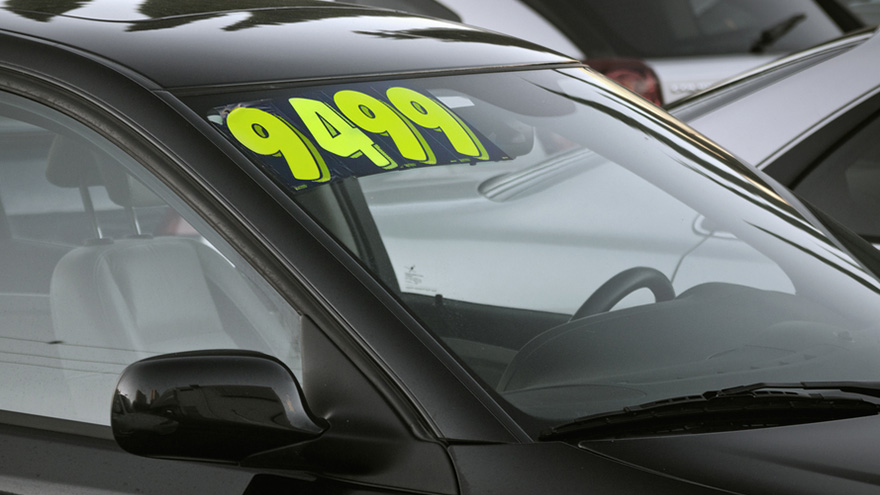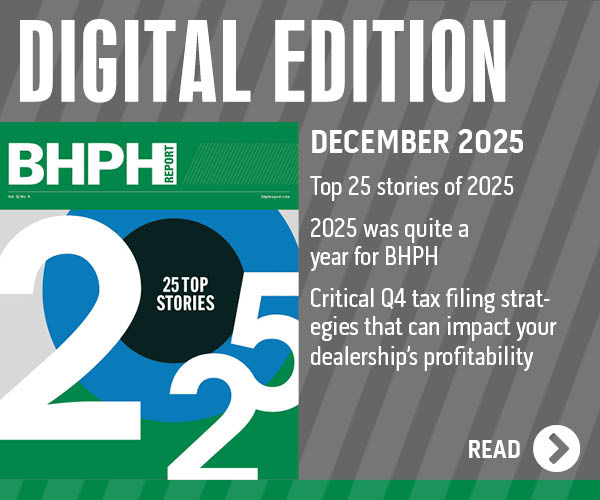COMMENTARY: Current landscape demands shrewd strategy by BHPH operators

By subscribing, you agree to receive communications from Auto Remarketing and our partners in accordance with our Privacy Policy. We may share your information with select partners and sponsors who may contact you about their products and services. You may unsubscribe at any time.
IRVINE, Calif. –
“It’s a perfect storm of used-vehicle demand meeting a perfect drought of used-vehicle supply.”
That was the word from KAR Global chief economist Tom Kontos in his latest update regarding current used-vehicle market conditions.
Consumers are now learning what used-vehicle retailers have known for eight months or more. Many new-vehicle models are in short supply as the result of computer chip shortages and other pandemic-related supply shortages.
When consumers consider a used-car purchase, they find their choices limited as fewer off-lease, off-rental and repos units are returning to the wholesale marketplace. All these inventory shortages mean that the vehicles that manage to roll across the auction block are fetching record-high prices. Consumers are faced with limited offerings and higher prices.
As March ended, prices of used cars and trucks of up to eight years old that were sold at wholesale auctions rose by 3.1% from the prior week, according to data by J.D. Power. Tax season, bolstered by $1,400 federal stimulus checks reaching consumers, saw prices spike by an additional 8.3% in the first weeks of April. Compared to early March 2020, just prior to the COVID-19 Pandemic shutdowns, prices spiked by 20% and higher in certain market segments.
Inventory is hard to find and expensive when you do. For buy-here, pay-here dealerships and subprime finance companies, this makes the high-risk business model even more challenging. Prices are rising, but wages are not. Because of the increased values, dealers are left with difficult choices. They can’t raise a monthly payment to cover the increased cash-in-deal, because their customers simply don’t have it in their budgets. Lengthening the term of the loan always adds greater risk to the portfolio. Getting larger down payments is an option, but this tends to limit the number of vehicles a dealer can sell.
Subscribe to Auto Remarketing to stay informed and stay ahead.
By subscribing, you agree to receive communications from Auto Remarketing and our partners in accordance with our Privacy Policy. We may share your information with select partners and sponsors who may contact you about their products and services. You may unsubscribe at any time.
BHPH and subprime financing have always been a game of brinksmanship. Sell too many cars, and you outpace your capital. Don’t sell enough vehicles, and your business tends to stagnate and cash flow dwindles. There are options out there when it comes to finding right-priced inventory that fits your business model, and dealers who are able to locate inventory right for them, timely, in the quantities needed will definitely have an advantage over their competitors.
According to Tom Stewart, chief executive officer of Auction Management Solutions, a consultancy serving about 20 independent auto auctions and smaller chains, said his portfolio of auctions have an across-the-board 30% decline in consignment volume.
“That’s not just our clients, it’s across the country,” Stewart said. “These auctions have 70-80% conversion rates.”
Stewart travels across the country regularly and noted that not only are rental vehicles in short supply, but those also used in fleet may have 40,000 to 50,000 miles on them. He said he’s seen recent articles where rental cars in states with high tourism cost travelers $500-$700 a week and more.
Dealers ought to pay close attention to these challenges, because they are likely to linger for several years, if not well into 2025.
The National Auto Auction Association held a 2021 Economic Outlook Webinar in mid-April with KAR Global’s Kontos, and Jonathan Smoke, who is the chief economist at Cox Automotive. Both agreed that used vehicle prices will remain high for the foreseeable future. While it’s always difficult to make predictions so far out, Kontos pointed out some obvious pressures on the used-vehicle supply.
Rental car companies decreased the size of their fleets as the pandemic took hold. While predictions of a massive oversupply were overestimated, the companies did their best to manage fleet downsizing.
“Rental fleets have been downsized and we’ve heard reports that rental cars simply are unavailable, or that travelers will pay more for their rental cars,” Kontos said. “With manufacturers facing computer chip shortages, they will devote what is available to retail to support their dealer networks. It may take a couple of years for fleet sales to return to normal.”
As rental car companies re-fleet and those vehicles then return to market in 2022 and 2023, Smoke said, the dramatic decline in new vehicle sales in 2020 will mean far fewer off-lease vehicles returning to market in 2023 and 2024.
“It could well be 2025 before we see a market like we had in 2018-19,” Smoke said.
There are two ways to approach this perfect storm for finance professionals — adjusting the business model and finding new sources for right-priced vehicles. Both pose significant challenges.
Adjusting the business model
As supply issues affect pricing, it is the lower segment of the inventory market that will be squeezed. The 7- 8-year-old $2,500 wholesale vehicle simply doesn’t exist right now. That car now costs $4,000 to $4,500. What hasn’t changed is the quality of that unit. It’s still a $2,500 car that just costs twice as much. If a dealer has $300 a month customer, there’s no magic that will convert them to a $400 a month customer.
Dealers may have to shift their business models, tighten their underwriting, and look for better quality customers. More will have to be done up front to verify stips, gather references, and intensify their due diligence before entering the contract. Obviously, using GPS technology and the multitude of valuable analytics it provides is a must in this current environment.
With more cash at risk on the street, you’ll want to use the data the GPS technology provides to locate collateral when a recovery is warranted, get notifications when a unit enters a impound lot, or when a vehicle has become abandoned or disabled. Protecting your assets upfront helps to prevent back-end losses.
Finding new inventory sources
Dealers should be working much harder to find inventory to fill their lots, and one thing is clear — they are.
One of the key ways to find inventory is to ask for it. Having signs at the dealership letting people know you’d like to pay top dollar for their used vehicle is a time-tested method. Expand the reach of your sign by posting it on social media, Craigslist, Facebook, and anywhere else you think will work. Remember today you are now in competition with chains like CarMax and other dealers so be prepared to offer good money and make the process as easy as possible.
Search for sale by owner vehicle on Facebook Marketplace and Craigslist and don’t forget the local newspapers. At this point, looking for right-priced inventory in the numbers you need will require a full-court press.
Wholesale auctions are still the go-to, as well as public auctions. Most dealers have accepted buying online from the traditional Manheim, ADESA, smaller chains as well as ACV Auctions and Backlotcars.com have made the task easier and these vehicles come with very good condition reports and most report lower fees and relatively easy arbitration. Dealers have also expanded their reach.
Some dealers are going out 1,000 miles and eating the transportation costs.
With the advent of online sales and 20-minute auctions while a trade-in is still on a dealer’s lot, have resulted in a decline in the number of independent wholesalers in the marketplace. There are still some out there. Major wholesalers like Robert Hollenshead Auto Sales have 1,152 units in his wholesale inventory and runs vehicles at Manheim Pennsylvania 52 weeks a year. There are others.
We have heard some dealers looking across our northern border to secure inventory. The current U.S. dollar exchange rate with the Canadian dollar is $1.23. Of course, if you purchase a Canadian vehicle there may be homologation issues that will have to be addressed. There are companies that assist with the legal importation of the vehicles as well as the auctions.
Another, riskier, source of inventory is a project vehicle.
Vehicles that need a transmission, engine, or body work can offer an opportunity. Even salvage units may provide an opportunity. Of course, salvage-titled vehicles will raise eyebrows, and legal and regulatory compliance and full disclosure is a must.
Taking on a project vehicle poses challenges. Dealers with service bays have an advantage, but when purchasing the vehicle, it’s vital to know with certainty how much money it will take to get the vehicle ready for sale. Poorly estimating expenses will quickly exacerbate losses. Project vehicles are not for the uninitiated but can be another inventory source for many.
David Meyer is the president of Advantage GPS, an industry leader in the automotive telematics and analytics industry. Named one of Industry Era’s 2019 Best CEOs, he has more than 28 years of automotive retail, finance and telematics experience. He has been a dealer principal, manager, and understands the challenges and opportunities faced by today’s modern automotive retailers. Learn more about Advantage by contacting the company at (800) 553-7031, https://advantagegps.com or [email protected].


